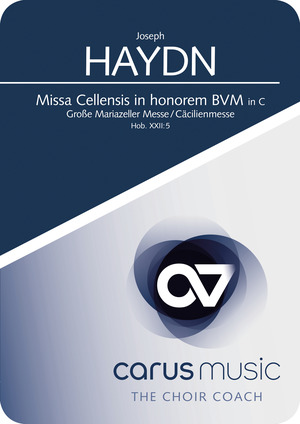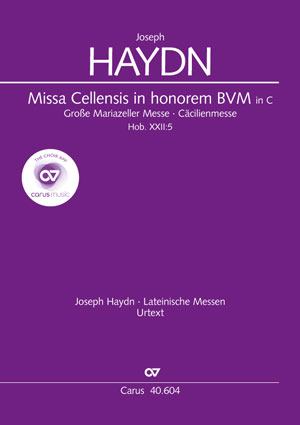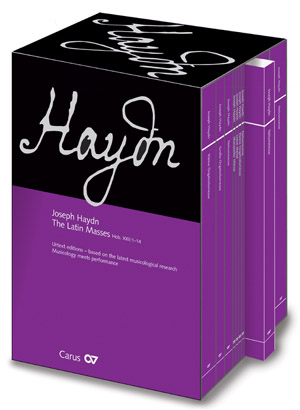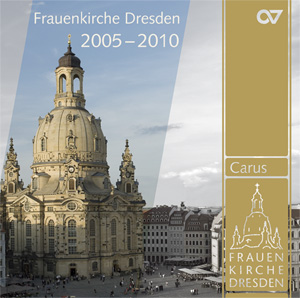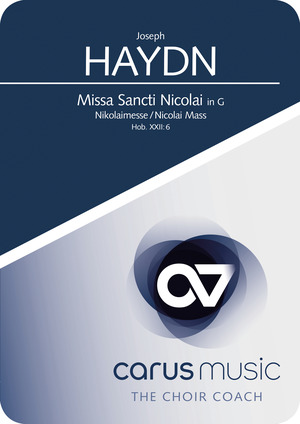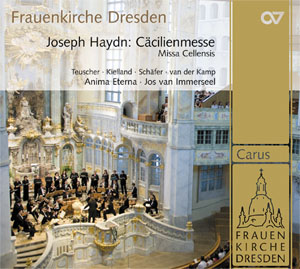
Contents
-
Composer
Joseph Haydn
| 1732-1809As Kapellmeister to Prince Esterházy, Haydn composed numerous instrumental works and various operas, as well as making important contributions to the genre of church music, including fourteen Latin masses, of which only twelve are authentic or complete; these are complemented by motets and offertories, two important Te Deum settings, two Salve Reginas, a Stabat Mater, and the different versions of the Sieben Worte des Erlösers am Kreuze. The masses were composed continually between 1749 and 1802, except for the years 1783–1795, and therefore constitute the genre with which Haydn was occupied over the longest period of time. The six (authentic or complete) masses composed before 1782 are stylistically very different, and as well as short Missae breves there are more extended masses with rich orchestral scoring; by contrast the six so-called late masses, written from 1796 onwards, form a comparatively homogeneous group of more extensive works scored for large forces. With his two great oratorios Die Schöpfung (The Creation) (1798) and Die Jahreszeiten (The Seasons) (1801) Haydn established the tradition of the German oratorio for middle-class music making. Personal details
-
Preface writer
Dorothea Schröder
-
Ensemble
Chor "Anima Eterna"
The Anima Eterna Choir is an ensemble of selected soloists and, like its orchestral counterpart, is a group of musicians which comes together to work on specific projects. The core membership, which can be expanded as required for larger works, comprises 16 singers. The choir’s hallmark is its combination of vocal artistry and committed music making. The ensemble was founded in 1987, since when it has established an enviable reputation, appearing at important festivals and concerts in the leading European musical centers. The choir has toured regularly with the Anima Eterna orchestra in Belgium, the Netherlands and further afield in Europe. Previous ventures included a Buxtehude project in the group’s inaugural year, a European tour of Haydn’s Die Schöpfung, and concerts in Paris, Lisbon, Antwerp and at the opening of the Concertgebouw in Bruges. This season, both groups can be heard in an all-Haydn program at the Haydn-Festspiele in Eisenstadt (Schloss Esterháza) and the Bremen Music Festival. Anima Eterna recorded Beethoven’s 9th Symphony last year, and has performed it in Paris, Brussels and Bruges. Personal details
-
Ensemble
Orchester "Anima Eterna"
In the last fifteen years, the Orchestra Anima Eterna has developed from a small Baroque ensemble into a full-scale symphony orchestra whose forces and instrumentation can be varied according to programming and the demands of historical performance practice. The orchestra has earned an excellent reputation, particularly for its authentic performances of the core 19th century repertoire; its historically informed interpretations now encompass repertoire up to the mid-20th century. Anima Eterna is involved in these ventures on a project-by-project basis. Research into historical performance practice always takes place in the context of a dialogue between conductor and orchestra. For each project, a regular core of soloists is supplemented with musicians who have experience particularly with repertoire and instruments. Anima Eterna regularly performs in Belgium and abroad. Since 2003 it has been “Orchestra in Residence” at the Concertgebouw in Bruges and has recorded CDs for the “Collection Anima Eterna” on the French record label Zig-Zag Territoires. Personal details
-
Conductor
Jos van Immerseel
Jos van Immerseel was born in Antwerp, Belgium and studied piano, organ, singing, harpsichord (with Kenneth Gilbert) and orchestral conducting (with Daniel Sternefeld). In 1973 he won the first Harpsichord Competition in Paris. His widely praised historically informed performances are the result of a constant dialogue between practice, musicological research, in particular his study of rhetoric in music, and the study of musical instruments. Over the years Jos van Immerseel has amassed an impressive collection of historic harpsichords and pianos enabling him to choose the most suitable instrument for a particular performance, which he can also use on concert tours and for recordings. He has received some of the most prestigious awards for his recordings as a soloist, including a Diapason d’Or and Le Choc du Monde de la Musique. Van Immerseel directs master classes in Europe, Japan and the USA and teaches at the Schola Cantorum Basiliensis, the Conservatoire National Supérieur de Paris and the Sweelinck Conservatorium Amsterdam. He been a guest conductor with the Akademie für Alte Musik Berlin, Wiener Akademie, Musica Florea Prague and many other orchestras. In 1987, Jos van Immerseel founded his own orchestra, Anima Eterna. The orchestra and conductor have made a large number of prize-winning recordings for the Accent, Channel Classics and Sony record labels, and since 2002, for ZigZagTerritoires, Paris. Personal details
-
Soloist - soprano
Lydia Teuscher
-
Soloist - alto
Marianne Beate Kielland
Marianne Beate Kielland (mezzo-soprano) studied singing in Oslo and New York with teachers including Barbara Bonney, and sang in masterclasses with Dietrich Fischer-Dieskau. As one of the leading Norwegian concert singers, she has performed with orchestras including the Oslo Philharmonic Orchestra, Israel Philharmonic Orchestra, Orchestre des Champs-Elysées, Concerto Köln and the Akademie für Alte Musik Berlin, as well as vocal groups such as RIAS Kammerchor, Collegium Vocale Gent and the Gächinger Kantorei. She has performed with conductors including Phillippe Herreweghe, Helmuth Rilling, Joshua Rifkin and Manfred Honneck and has sung at some of the leading festivals including the Haydn Festspiele Eisenstadt, Bregenzer Festspiele, Bruges Baroque Festival and the Bergen International Festival. Personal details
-
Soloist - tenor
Markus Schäfer
-
Soloist - bass
Harry van der Kamp
Harry van der Kamp has sung the entire solo and ensemble repertoires of the 16th to 18th centuries. He has given concerts under the batons of Leonhardt, Harnoncourt, Koopman, Herreweghe and Bruggen, as well as with the Hilliard Ensemble, Les Arts Florrisant, Cantus Colln, among others. Together with his Gesualdo Consort Amsterdam he has performed the entire madrigal oeuvre of the 16th and 17th centuries. Numerous inaugural recordings – including Sweelinck’s entire body of work – were highly praised. Counting Edison, Grammy, Echo, Diapason d’or and Midi prizes among his achievements, he was made a knight of the Order of the Netherlands Lion in 2010. In 2012, he was made an honorary citizen of Amsterdam. He is professor emeritus at the University of the Arts in Bremen, and maintains a demanding schedule as masterclass lecturer and competition judge. Personal details
Reviews
Die "Große Mariazeller Messe" in neuer Frische: Das nach langsamer Einleitung ins moderate Allegro übergehende Kyrie kommt federnd des Wegs, und Geiger platzieren ihre flinken Einwürfe mit leichter Eleganz. [...] Die fugierten Chöre stellen die Meisterschaft des vollreifen Komponisten eindrücklich unter Beweis - gerade in der konzisen Beschränkung der 17 durchweg knapp gehaltenen Sätze, deren Architektur die Tempi des Dirigenten Immerseel bestens zur Geltung bringen.
Rheinischer Merkur, Nr. 22, 2009
[...] Ha, da geht einem das Herz auf. Endlich einmal ein schlanker Chor, der stimmlich alles bieten kann und auch anbietet. Ein Orchester mit prächtigen Klangfarben, präzise und wendig agiert mit einem ebenso wendigen und gut abgestimmten Chor. Dazu gesellen sich ausgezeichnete Solistinnen und Solisten und ein geradezu entfesselter Jos van Immerseel, der einen Haydn präsentiert, der sich sehen und hören lassen kann. [...] Mit der neuen CD von Jos van Immerseel haben wir aber jetzt ein absolut richtiges und beispielhaft musiziertes Paradebeispiel einer Haydnmesse zur Hand. An dieser werden sich künftige Interpreten wohl oder übel messen lassen müssen. Die Nachfolger tun mir jetzt schon leid.
Robert Strobl
Toccata - 41/2009
Dieser Live-Mitschnitt aus der Dresdner Frauenkirche spendet pure Lebensenergie: So leuchtend, so erhellend gespielt und gesungen wird Haydns "Cäcilienmesse" zum perfekten Soundtrack für den Osterspaziergang.
Der Tagesspiegel, 29.03.2009
Frequent questions about this work
 There are no questions and answers available so far or you were unable to find an answer to your specific question about this work? Then click here and send your specific questions to our Customer Services!
There are no questions and answers available so far or you were unable to find an answer to your specific question about this work? Then click here and send your specific questions to our Customer Services!


